[Datamost, Apple II]
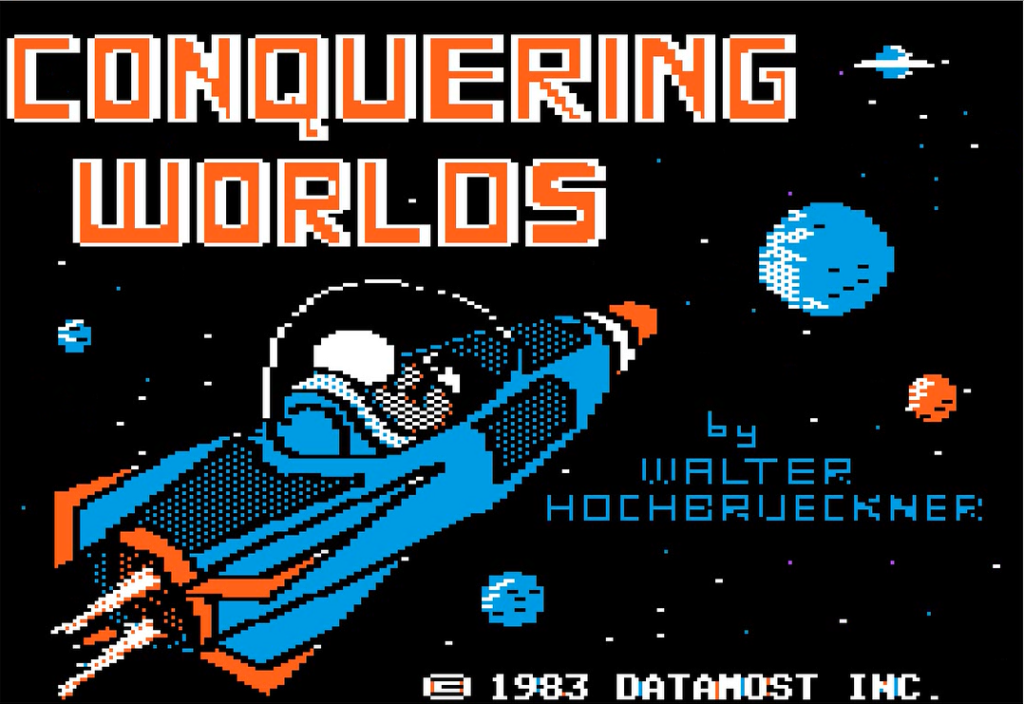
Conquering Worlds belongs to the sub-genre of games that I usually call Galaxy-clones : the player starts with a number of ships on one planet and must conquer the galaxy, with each additional planet automatically generating more ships every turn. After my article on Starclash, I vowed to stop covering this kind of game : the differences between the various clones are marginal, and they are so number-driven that they are difficult to write about and I suppose boring to read about. And yet, I feel I have to cover Conquering Worlds : it belongs to the same subgenre as the others, but has enough differences not to be exactly a clone.
This also means I will need to find a new name for the sub-genre.
As expected, I start the game with 46 ships on one planet. More specifically, I start on the 5th planet orbiting a star called Fomalhaut. I immediately jump to action ! Unlike the usual Galaxy-clones where turns are resolved simultaneously, Conquering Worlds use a sequential turn system, but with limited time to play one’s turn. I have 120 seconds to conquer as many planets as possible with my initial allotment of ships.
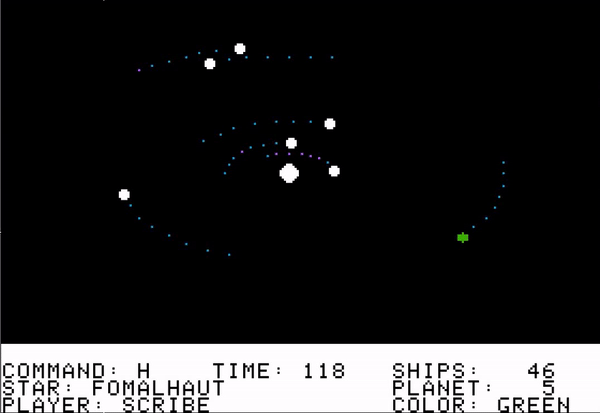
There are no “neutral defenders”, so the planets the closest to the sun are immediately conquered : one ship is enough, I still send 3 because you can lose some ships between turns.
The planets in the middle of the system take more time : intra-system travel has a limited range so I need to wait for the planets to pass next to mine to be able to send ships, else the game will state that “the distance is too great for impulse engines”. As for the 6th and 7th planets, I am never in range even when passing nearby. Time to check for another solar system.
I call the Galaxy Map, and I receive the ugliest and least useful map I have ever seen :
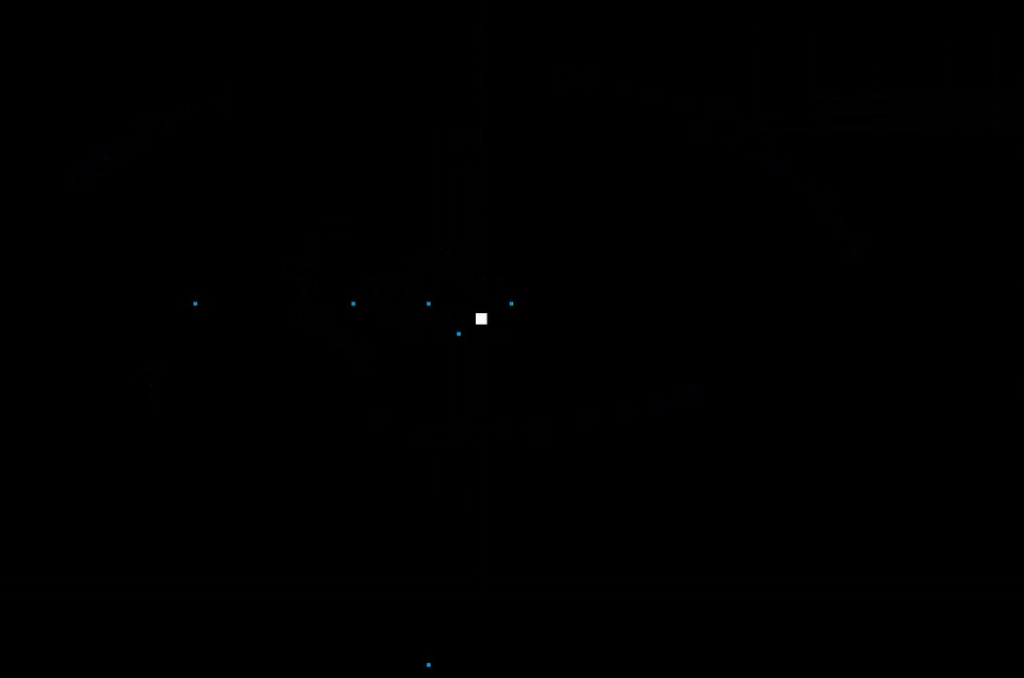
Fomalhaut is the white square. All the other dots are solar systems I have yet to explore, with an eighth last one not in view. You would think I have three neighbours (top-left, top-right, bottom-left) but as I said the map is not only ugly but also useless : the only system I can travel to from Fomalhaut is the one top-right from me, which I reach by sending my ships “North”.
With more than one minute left, I send my fleet and my base (=the planet from which I can dispatch ships) there. I arrive in a large system called Al Na’ir, where I soon occupy every single planet.
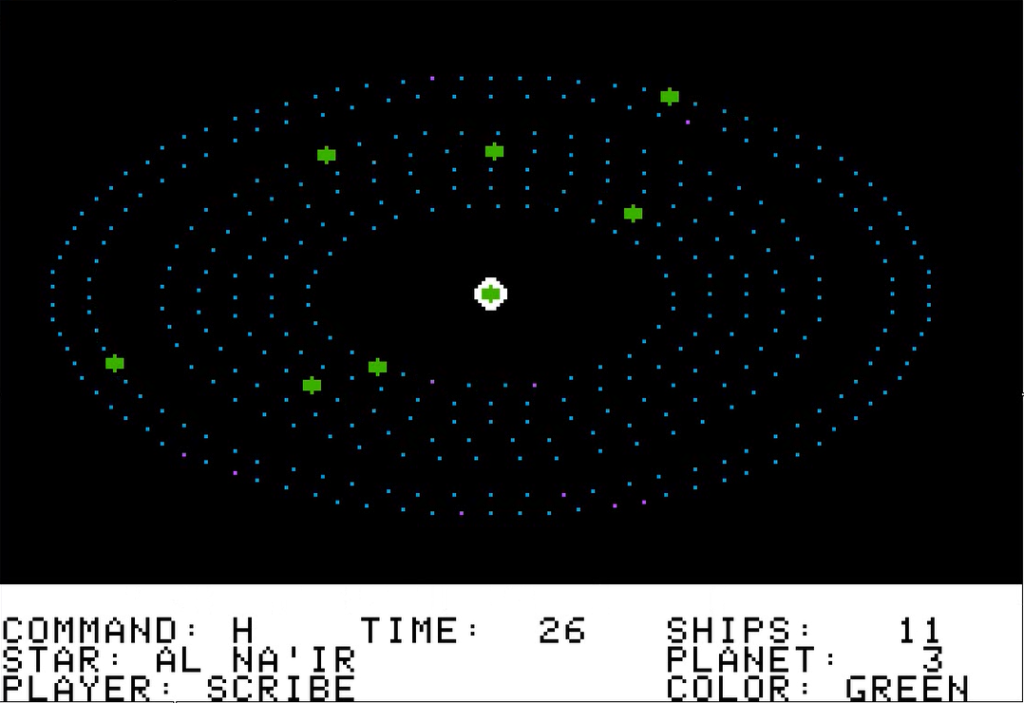
If you control all the planets of a system, you have a production bonus, so I try to take the two last planets on Fomalhaut by travelling back and forth between it and Al Na’ir (when you travel between systems, you arrive on a random planet, which can be yours or not), to no avail. My turn ends.
The AI player – called Citon – plays. It starts on a 5-planets system called Deneb, which it fully colonizes before moving to another 2-planet system called Mintaka. There, it spends most of the rest of its turn trying to jump from the second planet to the first one, but the geography of the place makes that impossible :
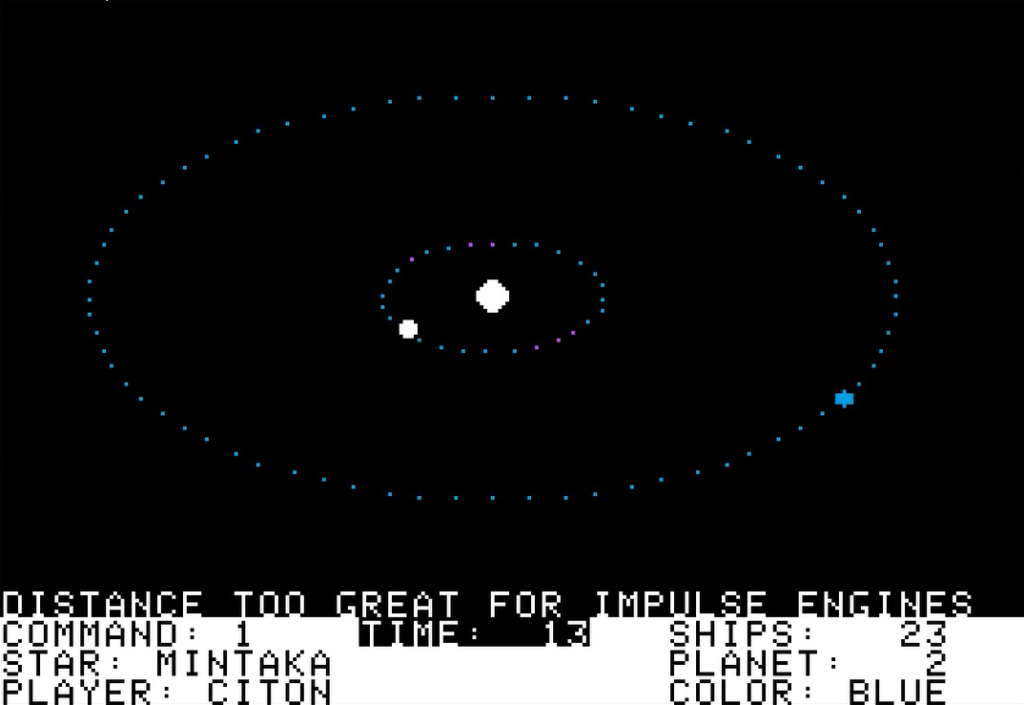
Just before its turn end, the AI sends some ships “Up” (the directions in space are “North”, “South”, “West”, “East”, “Up” and “Down”) and then the turn comes back to me.
I spend an unreasonable amount of time trying to grab the two last planets of Fomalhaut, and after 30 seconds of back and forth I succeed. After that, it is time to plan my next move ! Given I cannot trust the “galaxy map”, I open the “local map” :
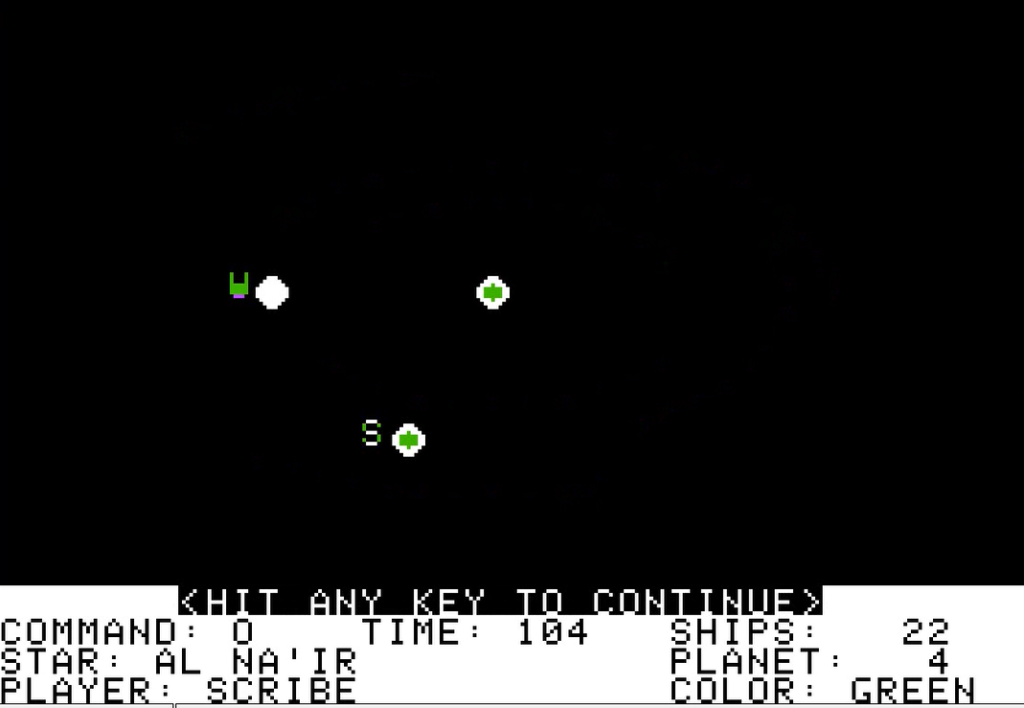
Well, not that much to plan after – there is only one direction : “West”. I send 19 ships West…
… where I immediately encounter some of Citon’s ships :
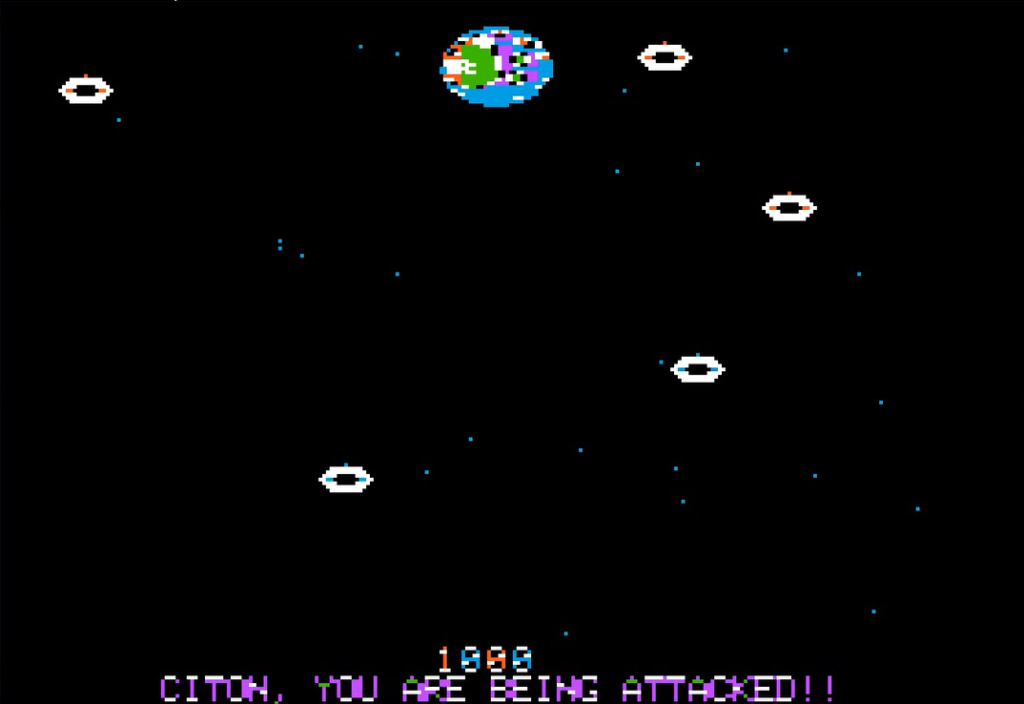
In Conquering Worlds, the battles can be resolved either by some terrible arcade gameplay or automatically. Testing those arcade battles twice while training for this AAR was enough – for my sanity I am going to solve all battles automatically.
After winning the battle, I realize I am in Achernar, a two-planet system “Above” Mintaka, that other two-planet system that had defeated the AI navigational skills. I occupy the second planet and hold my position.
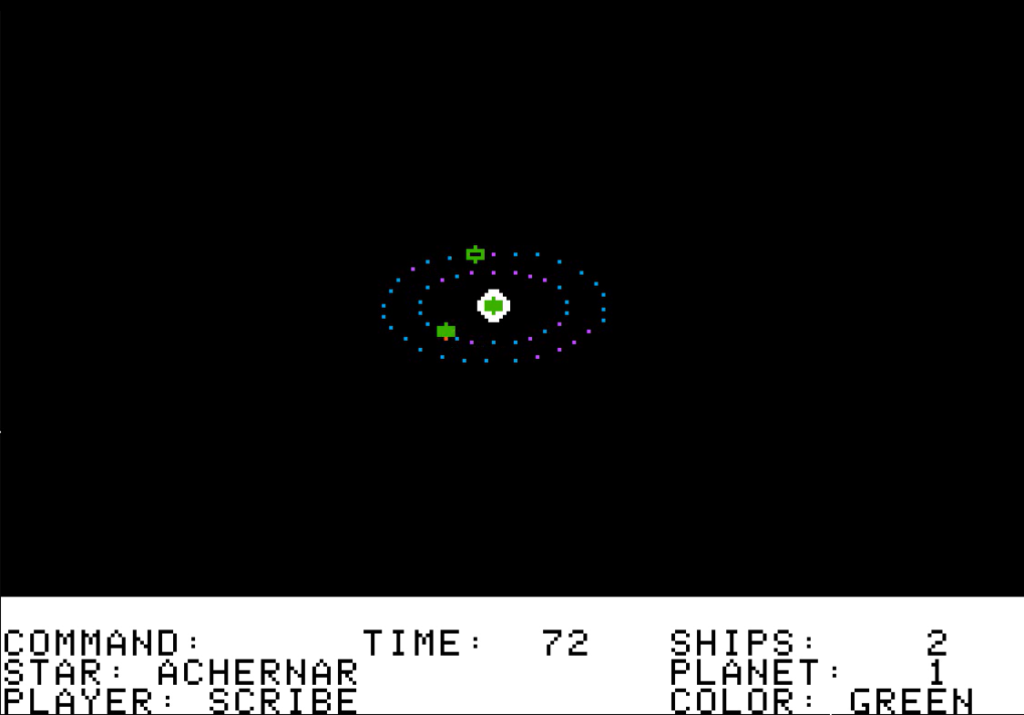
At this point, I have shown everything the game has to offer, so let’s end this quickly :
- During its turn, the AI grabs some troops from Deneb, jumps into Mintaka and occupies that first planet that had eluded it the previous turn, and then attacks me in Achernar, defeating my forces but at the cost of most of its units. It is unable to push further.
- During my turn, I spend the first minute jumping from planet to planet in my systems, grabbing all the units I generated in the previous turns, and then retake Achernar. After leaving some defence on Achernar, I jump “West” from Achernar and fully conquer a system called Hamal.
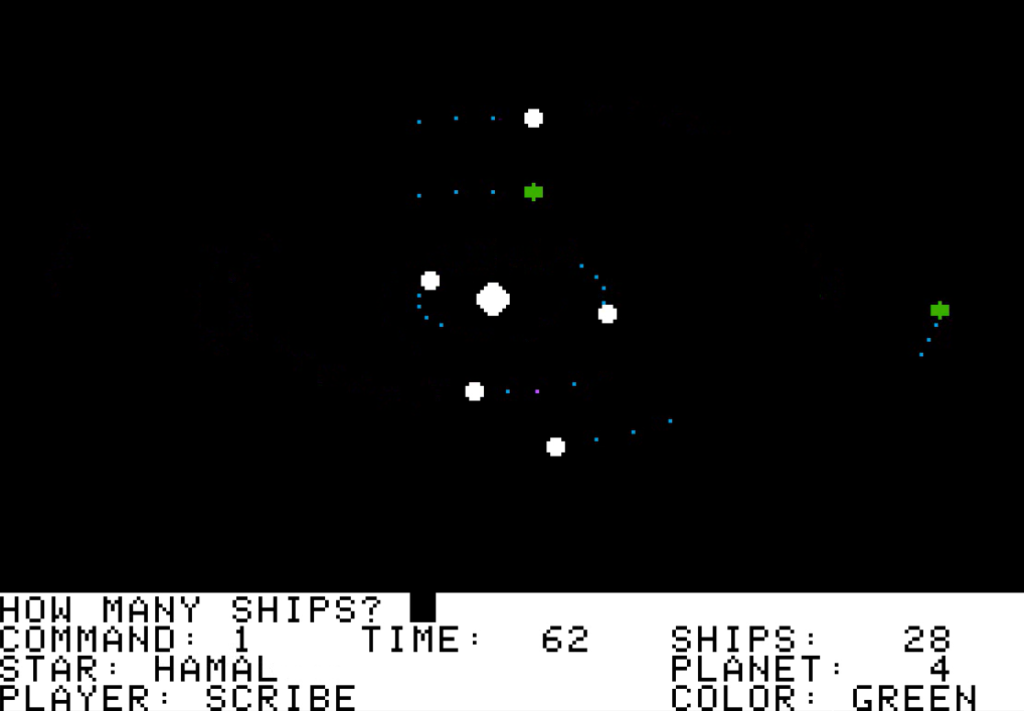
- The AI attacks the following turn again, breaking through Achernar but – again – unable to go further.
- Finally, I grab everything I have – again – and liberate Achernar, push through Mintaka and reach Deneb, though I run out of steam before taking the last planet.
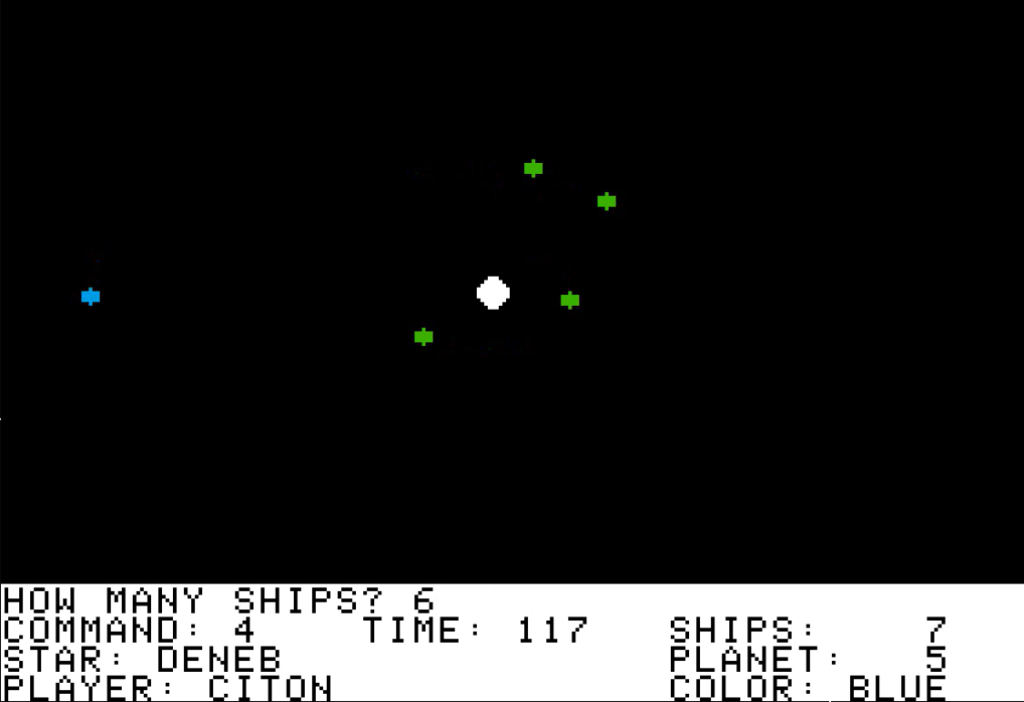
- I am spread very thin, so Citon manages to retake all of Deneb except one planet with the 7 ships it started its turn with, and as you can imagine, I easily win the game when the turn comes back to me. The End.
The game tells me that due to a combination of size of the galaxy (8 systems, maximum is 32 possible) and number of turns needed to defeat Citon my final score is 180. A previous owner of the game reached 845, so there is some margin for improvement.
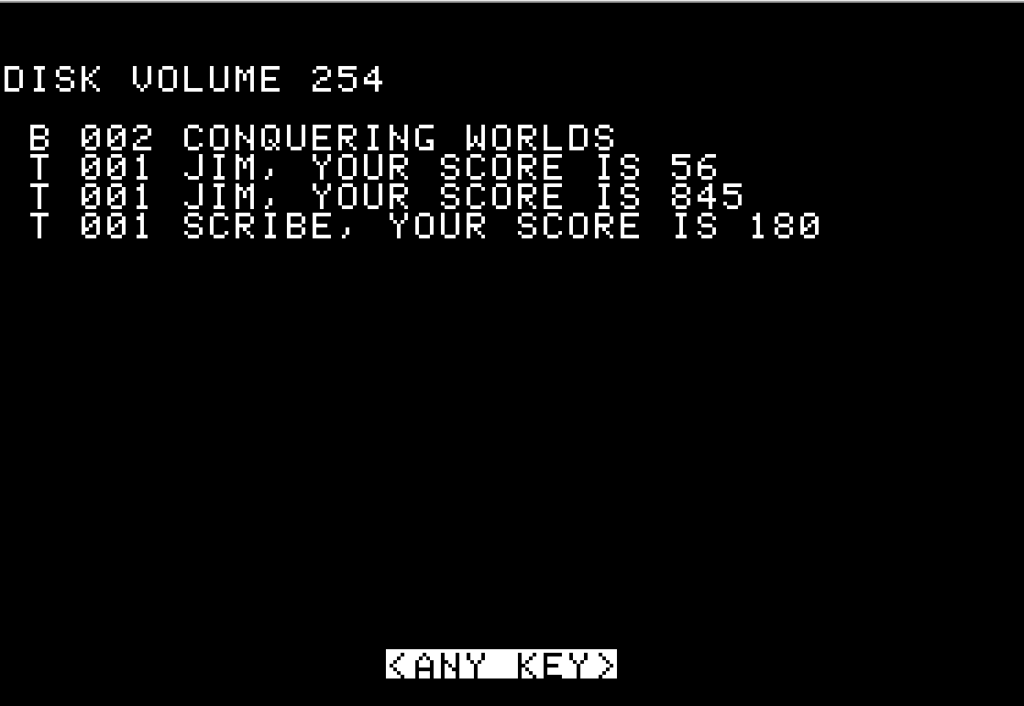
On the other hand, I am not going to try to actually improve. There is a reason why there are only 2 scores besides mine on this disk – but let’s see that in the Rating & Review.
Rating & Review
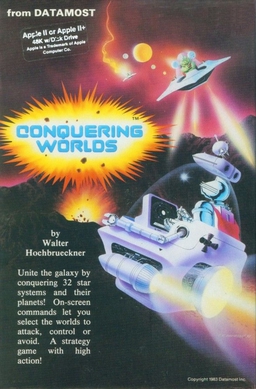
Conquering Worlds by Walter Hochbrueckner, published by Datamost Inc, USA
First release : October 1983
Tested on : Apple II emulator (AppleWin)
Total time tested : 1 hour
Average duration of a campaign: 30 minutes in solitaire for 8 systems,
Complexity: Easy (1/5)
Would recommend to a modern player : No
Would recommend to a designer : No
Final Rating: Totally obsolete
Ranking at the time of review : 73/86
I have very little to say about Walter Hochbrueckner : according to Mobygames he developed another Chess Game and – possibly, that may be a different person – contributed to Heroes of Might and Magic I & II in different roles. That’s all I know about him.
Datamost Inc. on the other hand is an interesting company, and since Conquering Worlds is to my knowledge the only wargame they ever released in a list of 40+ games, that’s also the only opportunity I am going to have to tell you about it.
Datamost was founded in 1981 by David Lawrence Gordon. Gordon is quite unlike the other founders of the video game industry : born in the 40s, he had in the 70s a settled life as an accountant in the movie industry. But he was fascinated with technology and when the 1977 Trinity was announced he ordered… the 3 of them : the TRS-80, the Commodore PET and the Apple II. The latter immediately became his favourite, and he started a quest to collect all the software he could find. As Softtalk put it :
A hustler, a trader, a Brooklyn-turned-L.A.-bum, Gordon copied and traded software as if it were bubble-gum cards. It must be said in Gordon’s defense that in the early days of the Apple — when it was mainly a hobbyist’s machine — copying and trading of software was fairly common. That notwithstanding, for years Gordon was known in the industry as one of the country’s biggest pirates.
His reputation allowed him to approach Steve Jobs and Steve Wozniak and in a weird twist of fate Apple saw him as an informer of sorts on the microcosm of independent programmers and tiny companies the Apple II had indirectly created. For Gordon, it was obvious he was in a unique position to create his own publishing company. He became acquainted with Mel Norell, the founder of a small company called Programma Associates. Programma Associates provided software for the Sphere-1, a computer so forgotten I discovered it while writing this article. Sphere-1 software was not exactly a booming business, and in 1978 Gordon convinced Norell to found with him a new company focused on the more promising Apple II : Programma International. It seems like a perfect plan : Gordon would bring the games, and Norell would manage the company. It also absolutely did not work.
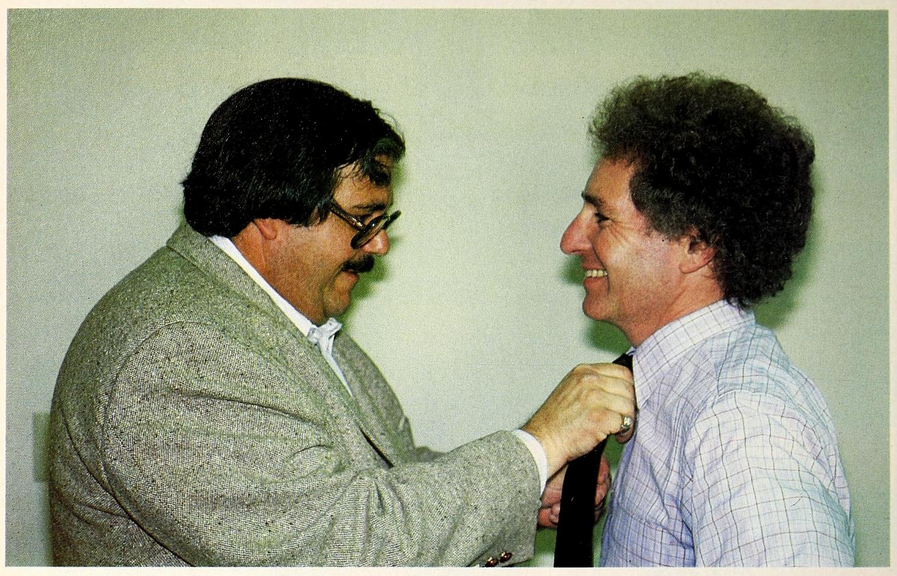
Gordon was a better collector than businessman. Programma International offered an unrivalled number of software – 150 different cassettes – but only because Gordon never cared for quality and never trimmed the catalogue. This worked in 1978 and maybe in 1979, but as consumers required more from their software they began asking for their money back, and Programma International ran out of cash. In September 1980 Gordon and Norell had no choice but to sell Programma International to the Hayden Book Company.
Learning from his failure, Gordon decided to start anew, and founded Datamost in Fall 1981. The company met immediate success, with in particular a book (Using 6502 Assembly Language) selling an impressive 30 000 copies and two games called Thief and Snack Attack :
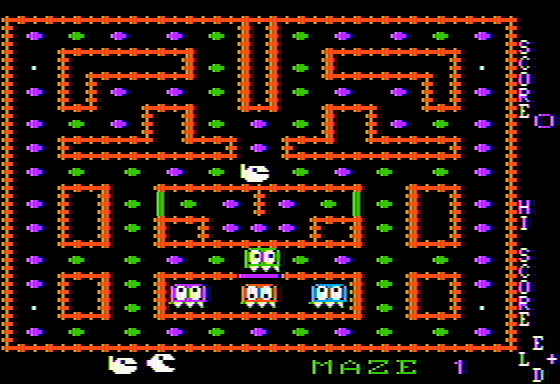
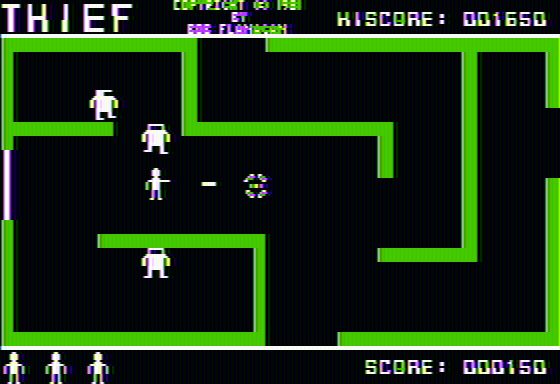
Edit : As commenter arthurdawg noticed, it is rather a rip-off of Berzerk !
These early successes and Gordon’s reputation immediately positioned Datamost as a go-to publisher. Gordon expanded in all directions : dozens of programming books, games and professional software, both in-house development and publishing. Everything was going GREAT.
And then the video game crash of 1983 happened.
Datamost’s game catalogue had the odd strategy or management games and even one RPG, but the bulk of it was arcade. The market had been saturated with these games – easy to produce, even easier to clone. The offer had grown much faster than the demand, and prices brutally adjusted downward.
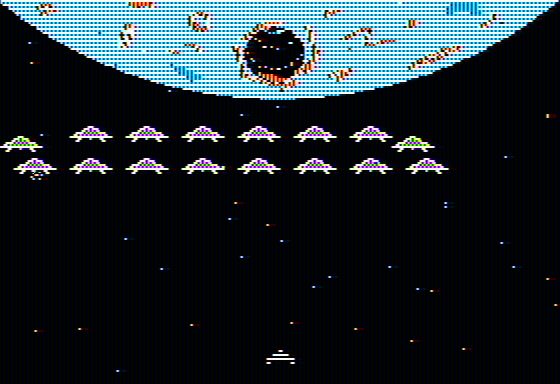
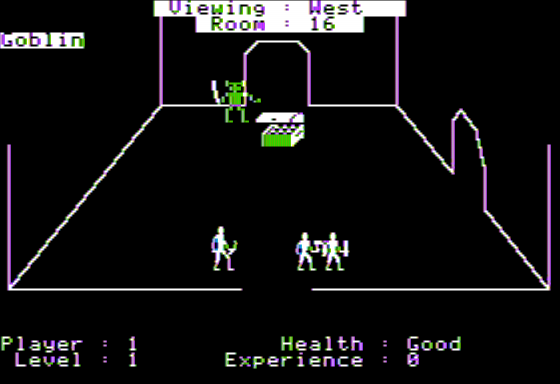
From what I can tell, Datamost’s games were often derivative but generally above their competitors in terms of visual quality ; still the crisis hit everyone equally. In an interview to ANTIC, the former head of the book division of Datamost Hal Glicksman recalls that during the 1983 crash, $40 cartridges would be sold for $3 by stores just to empty the store. The game division of Datamost basically disappeared from the “profit” part of the P&L.
In July 1984, Gordon admitted, in an interview to Infoworld, four mistakes : “We spent too much on advertising, our inventory levels were too high, we hired in anticipation of sales, and we had too much software development going on.” Still, Datamost was in a better position than many of its peers : the games were where the fun and the prestige were, true, but the cash cow had always been the books. The industry was new, and the public was craving for knowledge. In 1983 alone, Datamost was selling 100 000 books a month. Gordon doubled-down on the book, releasing 5 new ones every month. Alas, it was the strategy of everyone. Glicksman recalls that in the early 80s, the largest sections in bookstores were Cooking and Travels ; in 1984 the Computers sections were larger than the Cooking and the Travels sections combined. But there are only so many computer books you can digest and the computer book market crashed in 1984 and 1985. This time, Datamost did not recover, and it folded soon thereafter.
Sources :
Softline, March 1982, New Players : Datamost
Softtalk, July 1983, Exec : Datamost
Creating Computing, November 1984, The First Decade of Personal Computing
Infoworld, July 1984, From the News Desk
ANTIC’s interview of Hal Glicksman, 2017
And now back to the game for a quick review :
A. Immersion
Terrible, no comment needed.
B. UI , Clarity of rules and outcomes
Terrible. The game tries to be different by giving you 120 seconds to play your turn, and to make sure that the 120 seconds are a real limit it makes UI as frustrating as possible:
- you cannot travel from one planet to another easily due to the “range of the impulse engine” or “gravitational forces” (when a planet is on the way to your target), so you try again and again until it works,
- Alternatively, you can try to bump back-and-forth between systems until the RNG puts you on the planet you wanted to reach
- You can only move units from the location you are at, so you need to travel all planets at the beginning of the turn (with the constraints above) to collect units and play.
On smaller maps – like the one I played – those frustrating features are not sufficient to slow you down – you run out of units before running out of time.
Speaking of frustrating features, the game has a convoluted system to determine where you actually are (your “base”). Changing base directly ends your turn, but if you send ships away your base follows the largest number of ships. In itself, that would be a risky design choice, but it is made pointless because you can also force a change of base even though you are only moving one ship (called an “absolute command”) or refuse to move (“transfer order”) so as long as you keep an extra ship around, the “changing base ends your turn” rule can be bypassed.
As for strategizing, the players are stuck with either a galaxy map that does not tell them anything or a local map that only shows the neighbouring system.
C. Systems
Very poor. I have already covered the strategy part in the game. Now, let me show you why I did not want to showcase the arcade part in my AAR :
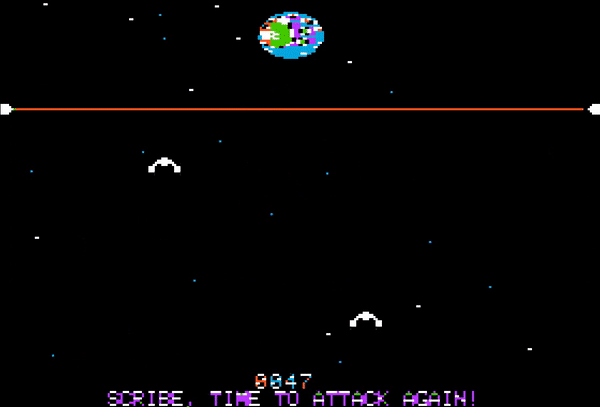
Players alternate in attack and in defence, but only the defender plays by moving the guns up and down and triggering the laser – the attacker can only wait, including against the AI. Hitting anything is only a matter of luck – no skill involved – and it is incredibly long as each target is one ship, so for a battle involving let’s say 40 ships on each side it is not only pointless, but also endless.
D. Scenario design & balancing
Terrible. The only choice in scenario is the number of systems (4 to 32). The game can be played at up to 4 players, with optionally one computer player replacing one of them. The AI is very poor but does not cheat. I am still thankful it is there – Galaxy had none.
E. Did I make interesting decisions ?
No. Maybe when the map is larger there are some decisions to take, but the AI is too weak to be a challenge anyway.
F. Final rating
Totally obsolete. The game manages to be both bland and frustrating to play, though at least it is bugfree and fast to play.
Contemporary Reviews
Conquering Worlds received mixed reviews. No one liked the arcade part (“repetitious and uninteresting after a few rounds” according to Computer Gaming World in April 1984), for the rest the reviews are either non-commital (Computer Gaming World again) or slightly positive, for instance Softtalk in October 1983 (“clumsy in parts”, but “enjoyable and challenging” when understood) or the 1984 Software Encyclopedia (overall rating : 7).
This detour that stretches the definition of wargaming done, we will be back to pulling swords out of stones in the more exciting and creative Excalibur.
8 Comments
Hard to get excited about this game, but Gordon’s story is pretty interesting. That Softtalk article is bittersweet to read in retrospect, knowing the market had probably already started to plunge by July 1983.
The Datasoft story is an interesting one that I’ve not read about before!
I’ve heard of the Sphere I… if nothing else the beginning of personal computing was fascinating for the vast number of platforms and evolutionary stubs… kind of like an Ediacaran fauna of computing! Or maybe the earlier computers were Ediacaran and the holy trinity started the Cambrian explosion? I’m known for bad analogies…
Thief looks more Berzerk-like than Shamus-like… used to love Berzerk on the 2600 and at the arcade.
You are right ! Thief is absolutely a Berzerk clone. I did not notice it because I never played Berzerk, but checking both games it is rip-off, even more so than Snack Attack is to Pac-man.
BTW Datasoft and Datamost are 2 different companies, though some staff moved from one to the other, for instance Gary Koffler who was VP at Datasoft and then VP at Datamost.
I’ve seen galaxy maps like that before. Of course the difference is those games usually had info off the the side about what was going on with those stars. Although come to think of it, I remember my brief experience with Star Control 3 a few years back did not go well and that basically just had that same thing, but in 3D.
What’s with another mediocre strategy game deciding that sucking as one genre isn’t enough, it has to suck at being an action game too? Was Archon really that popular at the time?
Seeing as you’re just moving ships from place to place to take real estate, I guess you could call it Space Risk.
Or 3X. You explore, you expand and you exterminate, but there’s no exploiting resources.
Space Risk is perfect ! I am going to use it from now on.
3X is not specific enough : Which X dropped ? 🙂
Very interesting on the company background. I am familiar with Programma and it’s loose morals regarding software piracy but I hadn’t made the connection to Datamost. The piracy has proven useful in the long term. In those early efforts to “collect everything” he took care enough not to remove credits of the original authors, despite redistribution without permission (likely without compensation) under his own label. His catalogs and advertisements circa 1978-1980 have helped tremendously with archival efforts to catalog and preserve a lot of older homebrew software.
I reckon the Softline article implied that Programma sold pirated software, but my certainty did not pass the threshold for inclusion. Thanks for confirming !